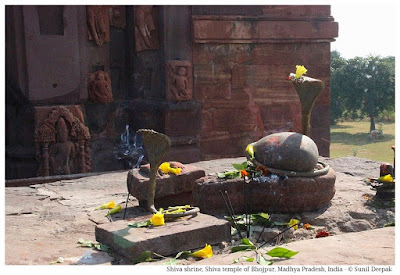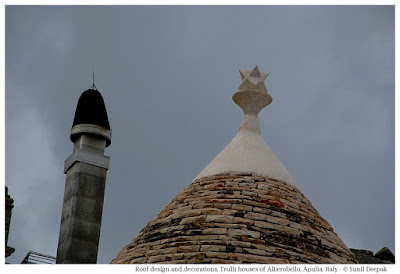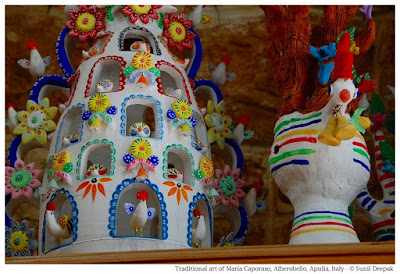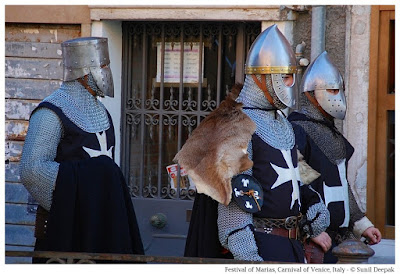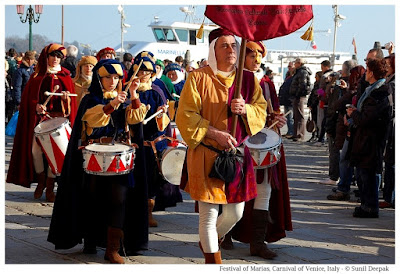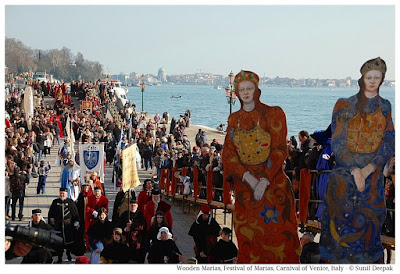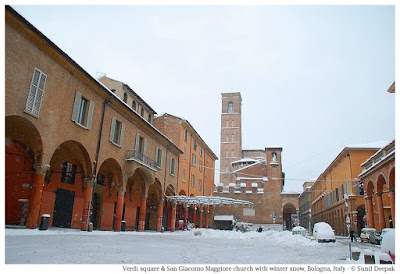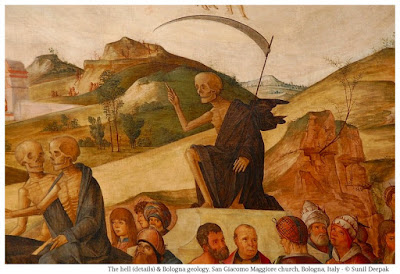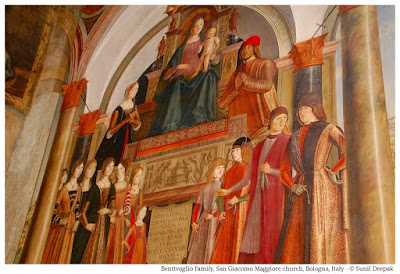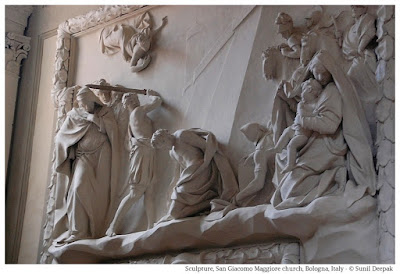The Shiva temple of Bhojpur provides information about the traditional Indian temple architecture techniques. The image above shows the statue of king Bhoj in the Bada Talab lake of Bhopal.
Ancient kingdom of Malwa
Central part of India had different ancient kingdoms, each with their own culture and traditions. In 1947, with India's independence, the ancient kingdoms were merged in different states. The ancient kingdom of Malwa was located in the volcanic uplands in the north of Vindhya mountains. Today, most of Malwa lies in Western Madhya Pradesh while its northern part is in Rajasthan. The most important towns of this region are Bhopal, Indore, Ujjain and Sagar.
King Bhoj
From the 9th to the 13th centuries, Malwa was ruled by the Parmar kings.
Bhoj was the 9th king of the Parmar dynasty and his rule started around 1000 CE. He ruled for about 55 years. His capital was in Dhar in western parts of Malwa. He is credited with the construction of Bhopal, the capital of Madhya Pradesh.
Bhoj was the 9th king of the Parmar dynasty and his rule started around 1000 CE. He ruled for about 55 years. His capital was in Dhar in western parts of Malwa. He is credited with the construction of Bhopal, the capital of Madhya Pradesh.
The town of Bhojpur, 28 km to the south and east of Bhopal was another area where king Bhoj carried out significant constructions including the building of dams which resulted in the creation of a big lake.
Bhoj is famous both as a warrior and as a lover of art, culture and books. He is credited with a large number of books on a wide range of subjects, including medicine, astronomy, poetry and grammar. His popularity and prestige is still remembered by the people through the proverb "Kahan raja Bhoj aur kahan Gangu teli" (literally it means "where is king Bhoj and where is oil-merchant Gangu" and is used to underline the huge difference between two persons).
The Unfinished Shiva temple of Bhojpur
The temple has massive outer walls and is built on a raised platform.
An entrance gate and stairs take you to the temple platform 4 meters above. The walls have decorative balconies carved from sand-rock stone.
The old part of the temple has the inner cell at a lower level (garbhagṛha) that holds a massive Shivalinga, 5.5 meters tall, and carved out of a single rock. The structure is supported by massive pillars, along with an elegant dome. In the image below, the comparison of the person seen at the bottom on the right side with the Shivalinga can give an idea of the huge structure.
The outer walls and superstructure of the temple were never built. However, outside the Garbhgriha, on the platform, simple Shiva shrines have been built.
The temple seems to be remarkably well-preserved. This is because of a massive repair and reconstruction carried out in 2006-07 when a fibreglass roof was built and one of the missing monolithic pillars was added.
Temple building techniques in India in 1000 CE
The Bhojeshwar Shiva temple was never completed. It appears that the construction work was stopped suddenly. It could have been because of a natural disaster or war. Since its roof was missing, some people feel that the planning was not proper and the roof was too heavy, so it caved in and the temple construction was stopped.
The temple has massive outer walls and is built on a raised platform.
Temple building techniques in India in 1000 CE
The Bhojeshwar Shiva temple was never completed. It appears that the construction work was stopped suddenly. It could have been because of a natural disaster or war. Since its roof was missing, some people feel that the planning was not proper and the roof was too heavy, so it caved in and the temple construction was stopped.
The area around the temple has sandstone quarries where line designs engraved on the stones show the architectural plans for the temple construction.
There are finished and unfinished statues scattered around, to be used for the temple. These were left in the quarries where the sculptors were working, when the construction was stopped.
The Shiva temple is located close to the river Betwa. Ruins of some old dams have been discovered in this area. The dams were built in the eleventh century, when the Shiva temple was being constructed. Due to those dams an enormous lake had formed in this area. It seems that the dams were destroyed a few centuries later, when the area came under the Tughlaq dynasty.
Jain temples of Bhojpur
Not very far from Shiva temple is an unfinished Jain temple with a 6 meter tall statue of Shantinath and two smaller statues. An inscription near the statues specifies their construction in 1157 Vikram Samvat (1100 CE).
Legends also say that in the last years of his life, King Bhoj had become Jain, while others say that even though he was a devotee of Shiva, he also respected Jains and Buddhists. I did not visit this temple.
Temple Ruins in Ashapuri
6 km away from Bhojpur, in an area called Bilota in the Ashapuri village, ruins of more than 20 temples have been found. Due to lack of time I did not visit this area. However, the descriptions of the ruins show that this must have an important sacred area for the people. These temples are also from the same time period of the reign of Parmar dynasty. I am not sure if these ruins were linked with the Shiva temple of Bhojpur.
Legend of Raja Bhoj and Gangu Teli
Though I was familiar with the name of king Bhoj from my childhood, I was not aware of the legend that had led to the proverb comparing him with the oil merchant Gangu. The legend says that king Bhoj had sacrificed the wife and child of Gangu for the construction of a fort.
Thus the fame of king Bhoj has been challenged by Dalit activists who see him as an oppressor king, who sacrificed the lives of poor commoners for his glory.
I was horrified when I had heard this story. I wonder how did he become so popular among the people if he was someone who sacrificed women and children.
Conclusions
The Bhojeshwar Shiva temple, though more than a thousand years old, is part of the living religious traditions of Malwa. People from far away places gather here for the Mahashivaratri festival. At the time of festival, the state government organises an annual cultural festival called the Bhojpur Festival.
***






